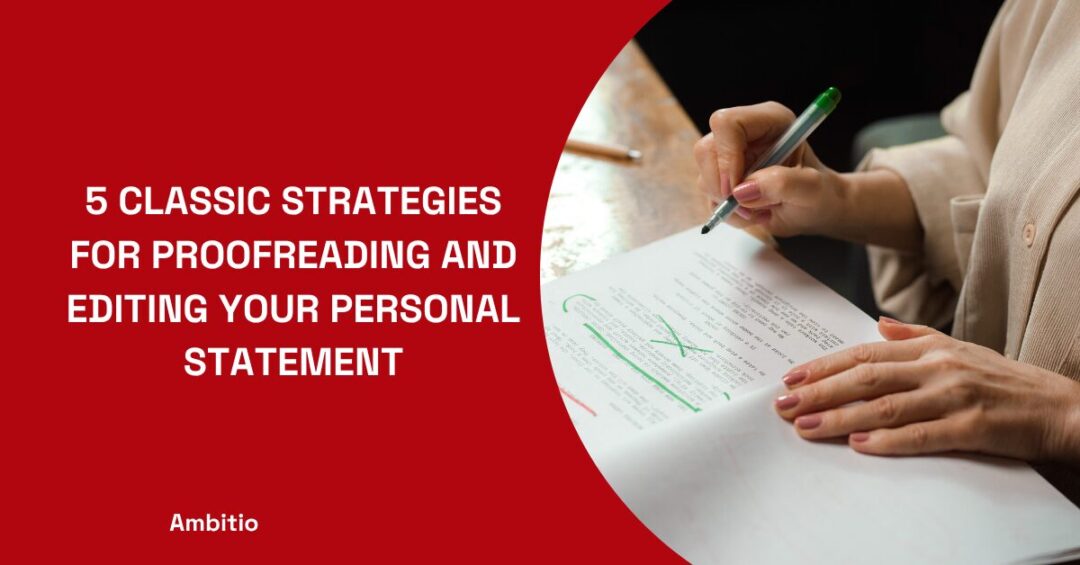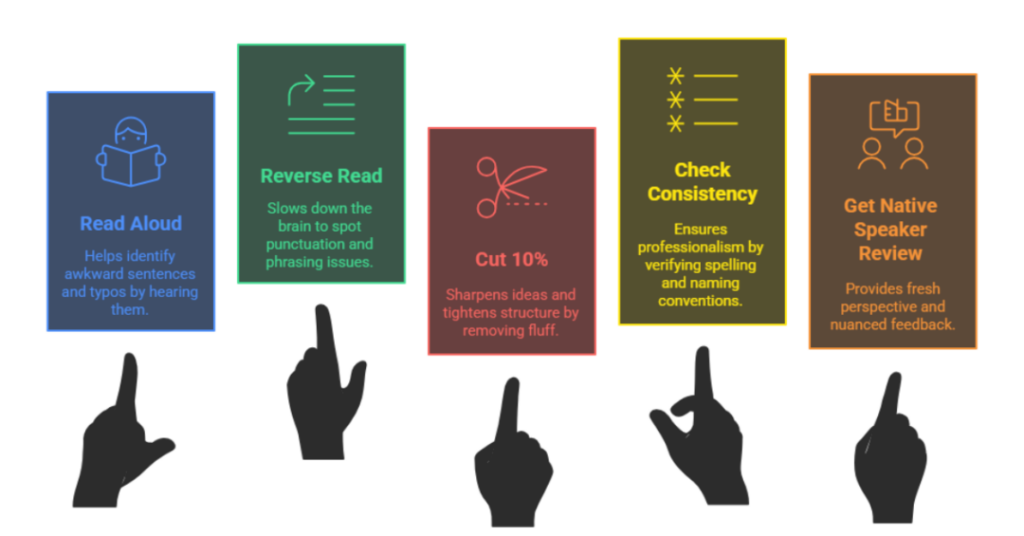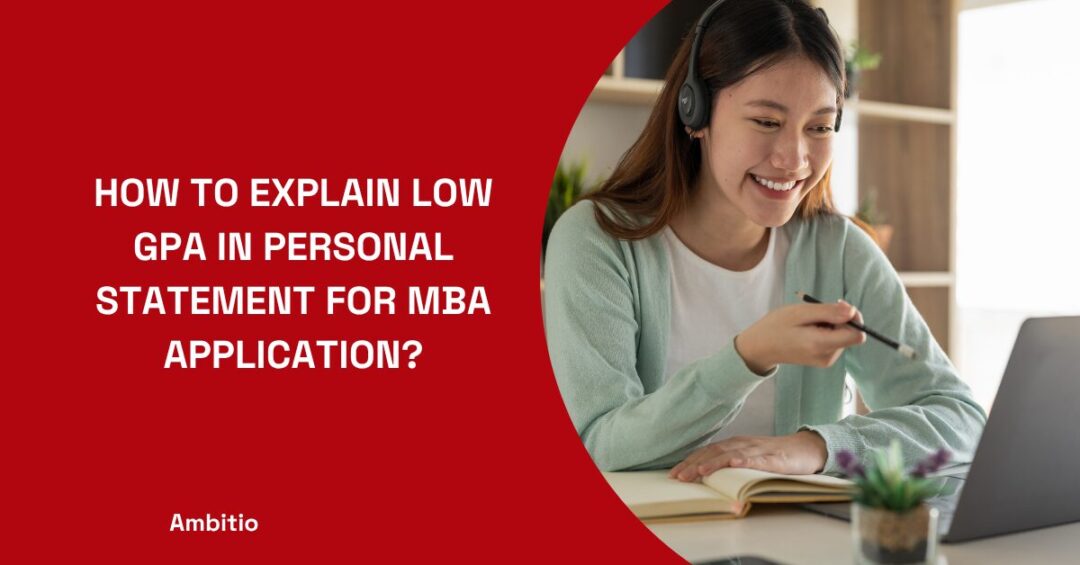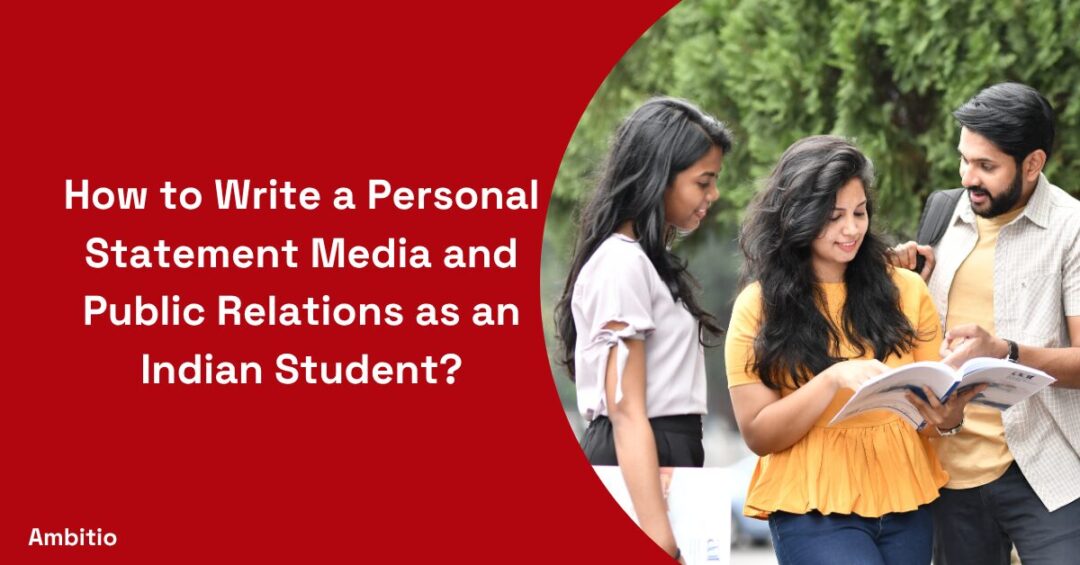3 June 2025
5 minutes read
5 Classic Strategies For Proofreading And Editing Your Personal Statement

Key Takeaways
- Personal statement proofreading catches deeper flaws than spellcheck ever will
- Admissions committees dismiss nearly 60% of essays for grammar or clarity issues
- Reading aloud and reverse reading help spot hidden tone, structure, and flow problems
Nearly 60% of personal statements get skimmed—and silently dismissed—because of grammar slip-ups, awkward phrasing, or clunky structure. Brutal? Yes. But if your essay reads like it was edited at 2 a.m. with one eye open, that will show. Admissions committees have no time, no pity, and no patience for careless writing. They’re scanning for clarity, not clichés—and they can sniff out a lazy revision job in seconds.
The good news? You don’t need to be a professional editor to clean up your draft. With a smart proofreading strategy and a no-fluff editing process, you can turn that rough doc into a polished, concise, and error-free application essay that actually sounds like you—just sharper.
What Are The Common Proofreading Mistakes In A Personal Statement?
“Proofread your personal statement,” they said. So you ran a grammar checker, fixed ‘teh’ to ‘the,’ and called it a day—right? Not even close. Personal statement proofreading isn’t just about correcting grammatical errors or tweaking punctuation. It’s a full-on editing process that demands sharp eyes, brutal honesty, and the ability to revise with precision.

If you’re serious about getting into graduate school, your application essay can’t just be good—it has to be error-free, concise, and easy to read. Because let’s face it: the admissions committee isn’t grading effort. They’re looking for clarity, strong grammar, and a story that actually sounds like you (but cleaner).
Before you send your essay off to an editing service or trust a proofreading service for a quick turnaround, check for these overlooked issues:
- You use “passion” more than five times—kill the fluff and edit for fresh, native English wording that actually means something
- Your tenses bounce around like a bad movie—proofread to keep your format and timeline readable and logical
- You hedge your statements with “I believe” or “I think”—cut the weak spots and be direct to boost readability and confidence
- You’ve copied parts of your CV into your personal statement—don’t, it kills your voice and bores any editor or admissions committee reading it.
- You rely only on a grammar checker—tools help, but only a real proofreader catches tone, flow, and true editing and proofreading depth
5 Classic Strategies To Proofread A Personal Statement
If you think “just one more read-through” will magically fix your personal statement, you’re not proofreading—you’re procrastinating. The reality? Most applicants blindly skim their draft, fix a few punctuation mistakes, run it through a grammar checker, and pray for a miracle.
But if you’re serious about impressing the admissions committee and boosting your chances of getting accepted into top schools, you need more than spellcheck. You need strategy. Because writing a personal statement is half the job. Editing and proofreading it with ruthless precision? That’s where the magic happens.
Now let’s break down 5 classic strategies that personal statement editors, expert editors, and professional personal statement editing services use to refine your draft and help your personal statement stand out from the pile.
1. Print It Out and Read It Aloud
Yes, it’s old-school. But nothing reveals typos and grammatical errors faster than hearing your own voice trip over awkward sentences. A printed page pulls you away from screen fatigue and highlights the tone of your personal statement. This technique is often overlooked, even by people using AI writing tools or a plagiarism checker, but it’s gold—especially when you’re chasing tight deadlines.
2. Do a Reverse Read-Through
Start at the bottom and read each sentence upward. Why? Because it forces your brain to slow down and actually review your personal statement line by line. This technique isolates structure and helps spot punctuation errors and phrasing issues that feel “off.” It’s a secret weapon many professional editor teams (like those at Wordvice or other editing and proofreading services) swear by to make your personal statement free of mistakes.
3. Cut 10% Without Losing Meaning
Trimming your document’s word count sharpens your ideas and tightens your structure. Too many applicants inflate their essays with fluff to hit a word count instead of saying something real. Whether you’re doing copy editing yourself or working with a personal editor, this is a crucial way to help improve your writing and highlight your unique voice.
4. Check for Consistency, Not Just Mistakes
Most people obsess over grammar and spelling, but forget to check whether they’re consistently using UK vs. US spelling, hyphens, or even naming conventions. These small details reflect professionalism. Throughout the editing process, this is where editing expertise makes a difference. Whether you’re using essay editing tools or hiring a professional personal statement editing service, consistency is what takes your statement of purpose to the next level.
5. Get a Second Set of Native English Eyes
Nothing beats a fresh perspective. If you’re not a native speaker, or just too close to the content, get your personal statement edited by native English speakers with strong writing and editing skills. That means going beyond auto-corrections and getting real writing suggestions from english editors who understand nuance. The best type of service is one that includes detailed corrections and grammar feedback and offers a quick turnaround time—with a “thank you for editing” moment built in.
Conclusion
Proofreading isn’t a final step—it’s part of writing. A personal statement that stands out isn’t just well-written; it’s well-edited, line by line, with intent. The difference between “okay” and “admit-worthy” usually comes down to clarity, flow, and whether your voice actually feels real. So take the editing stage seriously. Slow down. Look closer. Or hand it to someone who will. Because in this process, the sharpest version of your story is the one that gets remembered.
Most applicants struggle to write a perfect personal statement but end up sounding arrogant — but you won’t. At Ambitio, our AI-powered study abroad experts help you craft a powerful, standout statement that gets noticed. No fluff, no clichés—just a compelling story that proves you belong. Schedule a call with Ambitio’s experts.
FAQs
What is personal statement proofreading?
Proofreading is the process of carefully reviewing a personal statement to correct grammar, spelling, punctuation, and ensure clarity and logical flow
Why is proofreading important for a personal statement?
Proofreading ensures your personal statement is error-free, professional, and easy to read, which helps make a strong impression on admissions committees or employers
Who can proofread my personal statement?
You can proofread it yourself, ask a friend or tutor, or use a professional proofreading service with experience in academic or application documents
Should I proofread my personal statement myself?
It’s a good idea to proofread your own work, but having someone else review it can help catch mistakes you might miss
What are some tips for effective proofreading?
Read your statement out loud, use spell-check tools, check for logical organization, and review for consistent style and tone

You can study at top universities worldwide!
Get expert tips and tricks to get into top universities with a free expert session.
Book Your Free 30-Minute Session Now! Book a call now




























